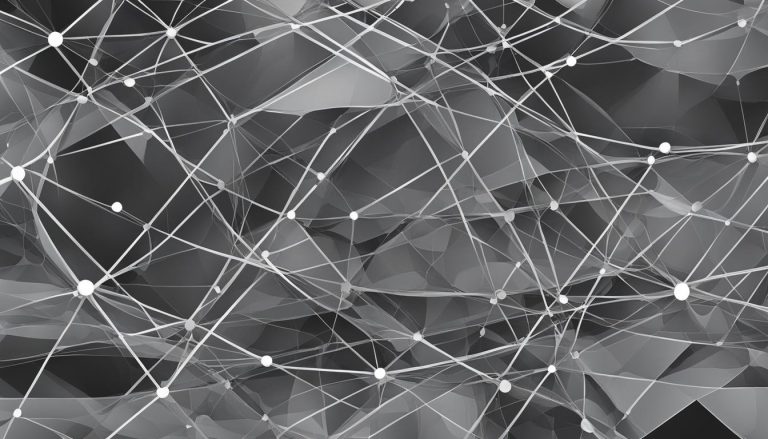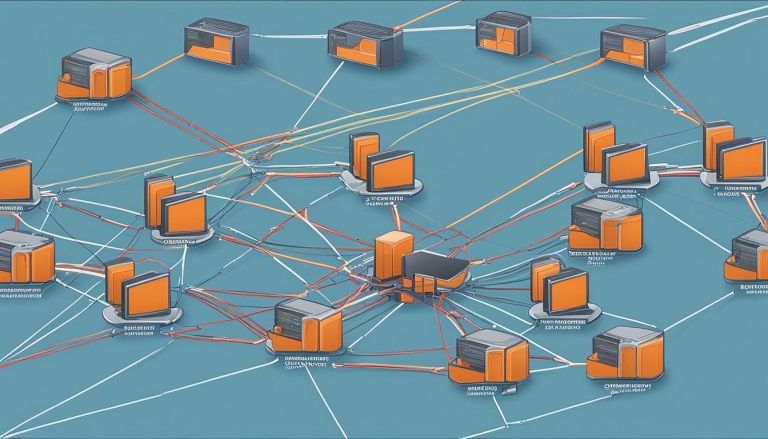Superposition is a fascinating concept in the field of quantum mechanics that explores the peculiar phenomenon where particles can exist in multiple states or locations simultaneously. It defies our classical understanding of reality and has captivated the minds of scientists and researchers for decades.
In simple terms, superposition refers to the ability of particles to occupy multiple states at once. This means that a particle can be in two or more positions or states simultaneously, defying the laws of classical physics. It is a fundamental principle that underpins the behavior of particles on a quantum level and has profound implications for our understanding of the universe.
Imagine a particle that can be in two places at the same time or have multiple properties simultaneously. This remarkable phenomenon has been demonstrated in experiments such as the double-slit experiment, where particles exhibit wave-like properties and can pass through both slits simultaneously, creating an interference pattern.
Superposition is governed by the superposition principle, which states that any linear combination of quantum states is also a valid quantum state. This principle allows for the existence of these multiple states and is a cornerstone of quantum mechanics.
Key Takeaways:
- Superposition is a concept in quantum mechanics where particles can exist in multiple states or locations simultaneously.
- It challenges our classical understanding of reality and has profound implications for our understanding of the universe.
- The superposition principle states that any linear combination of quantum states is also a valid quantum state.
- Experiments like the double-slit experiment demonstrate the wave-like behavior of particles in superposition.
- Superposition is a fundamental principle of quantum mechanics with applications in various fields, including quantum computing.
Understanding Superposition in Quantum Mechanics
In the fascinating realm of quantum mechanics, superposition is a fundamental concept that defies our classical understanding of reality. It revolves around the idea that particles can exist in multiple states at the same time, allowing them to occupy different positions simultaneously. This mind-bending phenomenon plays a crucial role in shaping the behavior of quantum particles and has far-reaching implications in various fields, including quantum computing and fundamental physics.
One of the most well-known examples of superposition is the double-slit experiment. In this experiment, a beam of particles, such as electrons or photons, is directed towards a barrier with two slits. Surprisingly, the particles exhibit wave-like behavior and can pass through both slits simultaneously, creating an interference pattern on a screen behind the barrier. This phenomenon demonstrates the ability of particles to exist in multiple states or locations, highlighting the essence of superposition.
The superposition principle, a fundamental tenet of quantum mechanics, states that any linear combination of quantum states is also a valid quantum state. This principle underpins the behavior of particles in superposition, allowing quantum systems to explore all possible states simultaneously and paving the way for quantum information processing.
Understanding superposition is essential for comprehending the intricacies of quantum mechanics. It challenges our classical intuitions and invites us to explore the fascinating and often counterintuitive world of quantum phenomena. Scientists and researchers continue to investigate superposition, seeking to unravel its mysteries and develop theories that can explain its underlying mechanisms. By grasping the nature of superposition, we can unlock new frontiers in technology, computation, and our overall understanding of the universe.
| Examples of Superposition | Applications |
|---|---|
| An electron existing in multiple energy levels simultaneously | Quantum computing |
| A photon occupying multiple polarization states at once | Quantum cryptography |
| A quantum bit (qubit) existing in a superposition of 0 and 1 states | Quantum algorithms |
| A particle being in a superposition of spin-up and spin-down states | Quantum simulations |
The table above highlights some common examples of superposition and their applications. From quantum computing to cryptography, understanding and harnessing the power of superposition opens up a wide array of possibilities for technological advancements and scientific breakthroughs.
The Strange Nature of Superposition
Superposition presents a challenge in quantum mechanics as it defies our classical understanding of reality. In a superposition, a particle can simultaneously exist in multiple states or locations. However, once a measurement is made to determine the particle’s state, the superposition collapses into a single state. This collapse of the superposition is known as the measurement problem and remains a mystery in quantum physics. Researchers have proposed various theories, such as retrocausation and the two-state-vector formalism, to try to explain the nature of superposition.
One theory that attempts to explain superposition is retrocausation, which suggests that the measurement made on a particle can retroactively influence its past behavior. According to this theory, the collapse of the superposition occurs as a result of the information gained from the measurement traveling backward in time to determine the particle’s previous state. While retrocausation remains a controversial idea, it offers an intriguing perspective on the nature of superposition and challenges our understanding of causality.
Another approach to understanding superposition is the two-state-vector formalism. This theory proposes that each quantum state is associated with two vectors: the future vector, which represents the state of the particle after measurement, and the past vector, which represents the state of the particle before measurement. The collapse of the superposition occurs when the future and past vectors align, resulting in a single definite state. The two-state-vector formalism provides a mathematical framework for describing the dynamics of superposition and offers insights into the measurement problem.
| Theories of Superposition | Description |
|---|---|
| Retrocausation | A theory suggesting that the measurement made on a particle can retroactively influence its past behavior, leading to the collapse of the superposition. |
| Two-State-Vector Formalism | A mathematical framework proposing that each quantum state is associated with two vectors: the future vector and the past vector, which align during the collapse of the superposition. |
“Superposition is a mind-bending concept that challenges our intuition about the nature of reality. It forces us to confront the strange and counterintuitive aspects of quantum mechanics. While we still don’t fully understand the mechanisms behind superposition, ongoing research and exploration continue to shed light on this fascinating phenomenon.”
As scientists delve deeper into the mysteries of quantum mechanics, the understanding of superposition continues to evolve. By investigating the strange nature of superposition and exploring theories such as retrocausation and the two-state-vector formalism, researchers aim to unravel the enigma and gain deeper insights into the fundamental workings of the quantum world. Superposition remains an intriguing area of study, holding the potential to revolutionize our understanding of the universe and pave the way for groundbreaking technological advancements.
Superposition in Quantum Computing
Quantum computing harnesses the power of superposition to revolutionize the way we process information. In traditional computing, a bit can be either a 0 or a 1, representing two possible states. However, in quantum computing, we introduce qubits, which can exist in a superposition of both states simultaneously. This means that a qubit can be 0 and 1 at the same time, exponentially increasing the computational power.
By utilizing superposition, quantum computers can perform complex calculations and algorithms in parallel, offering the potential to solve problems that are currently infeasible for classical computers. For example, quantum algorithms such as Shor’s algorithm have the ability to factorize large numbers at an exponentially faster rate than any classical algorithm. This has profound implications for cryptography and the security of our digital infrastructure.
To visualize the power of superposition in quantum computing, let’s take a look at a table comparing classical bits and quantum qubits:
| Classical Bit | Quantum Qubit | |
|---|---|---|
| Number of States | 2 (0 or 1) | Multiple (superposition of 0 and 1) |
| Processing Power | Sequential | Parallel |
| Computational Speed | Linear | Exponential |
As we can see from the table, quantum qubits offer an exponential increase in processing power and computational speed compared to classical bits. This is due to the ability of qubits to exist in multiple states simultaneously, thanks to superposition. As quantum computing continues to advance, we can expect breakthroughs in various fields, including optimization, machine learning, and drug discovery.
Conclusion
Understanding superposition is crucial in unraveling the mysteries of quantum mechanics. It is a phenomenon where particles can exist in multiple states or locations simultaneously, defying our classical understanding of reality. While the exact nature of superposition remains elusive, researchers continue to explore its implications and develop theories to explain its behavior.
Superposition holds great significance in various fields, including quantum computing. By harnessing the power of superposition, quantum computers can process information in parallel, potentially solving complex problems at an unprecedented speed. This opens up new possibilities for technological advancements and scientific discovery.
Examples of superposition, such as the double-slit experiment, further highlight the strange and fascinating nature of this phenomenon. The superposition principle, which states that any linear combination of quantum states is valid, underpins quantum mechanics and guides our understanding of particle behavior on a quantum level.
In conclusion, superposition remains a captivating area of research, with the potential to revolutionize our understanding of the universe and drive innovation in technology. As we continue to delve into the realm of quantum mechanics, unraveling the mysteries of superposition will undoubtedly lead to groundbreaking discoveries and advancements in various scientific disciplines.
FAQ
What is superposition?
Superposition refers to the ability of particles to exist in multiple states or locations simultaneously.
What is the superposition principle?
The superposition principle states that any linear combination of quantum states is also a valid quantum state.
How does superposition challenge our understanding of reality?
Superposition defies our classical understanding of reality as it allows particles to exist in multiple states or locations simultaneously.
What happens when a measurement is made in superposition?
When a measurement is made, the superposition collapses into a single state, known as the measurement problem.
Are there any theories to explain the nature of superposition?
Various theories, such as retrocausation and the two-state-vector formalism, have been proposed to explain the nature of superposition.
How does superposition relate to quantum computing?
Superposition plays a crucial role in quantum computing, where quantum bits (qubits) leverage superposition to process information in parallel and potentially solve complex problems at a faster rate than classical computers.
Jana is a public relations specialist and writes about all kinds of software products that make our life easier.


